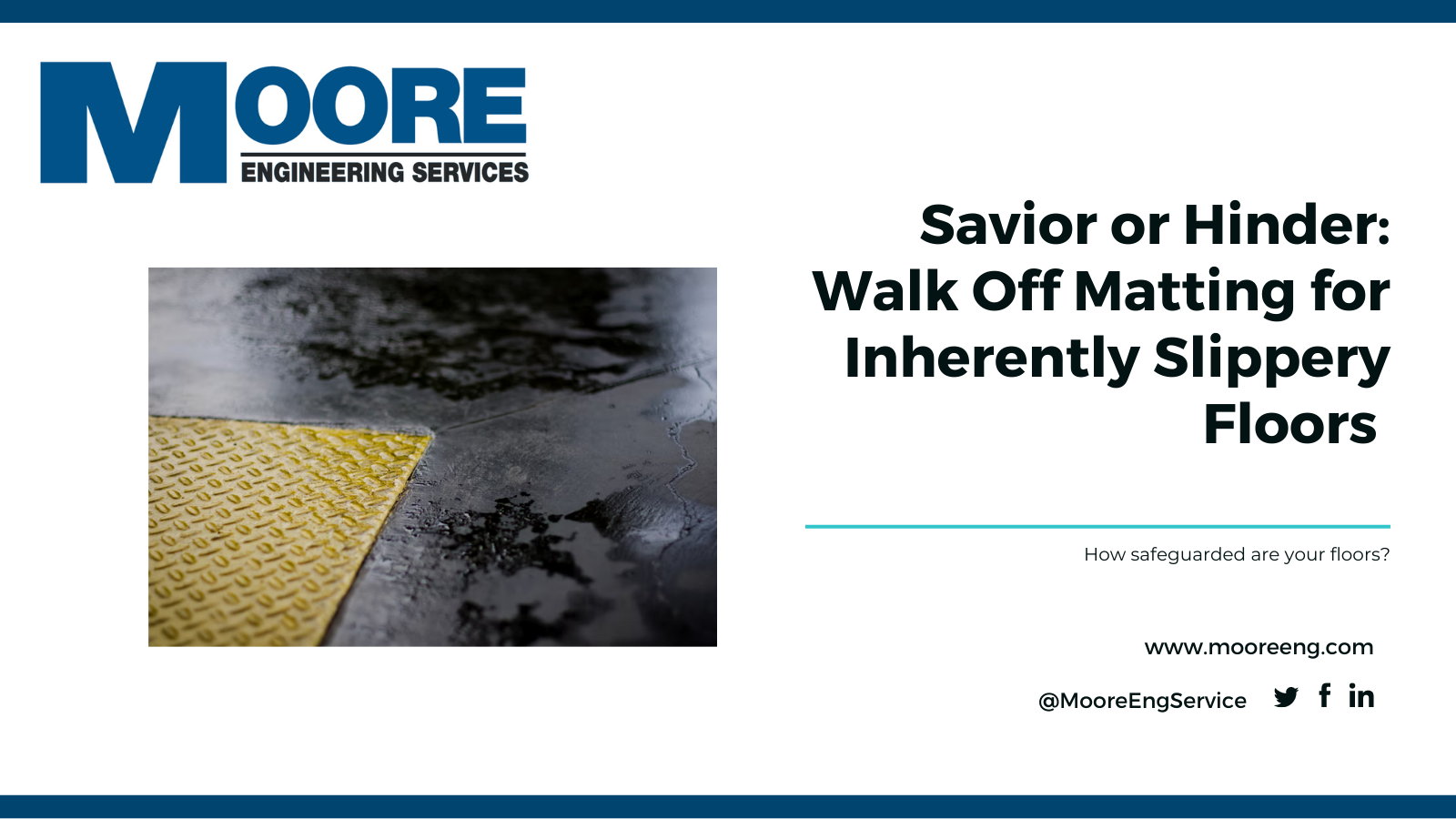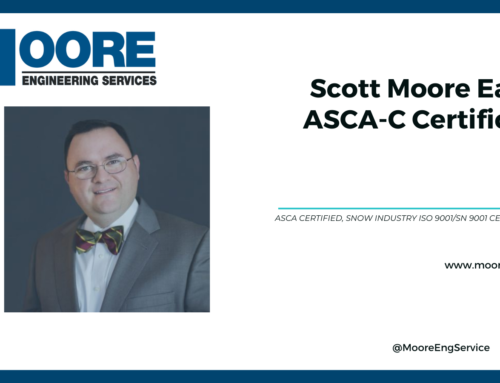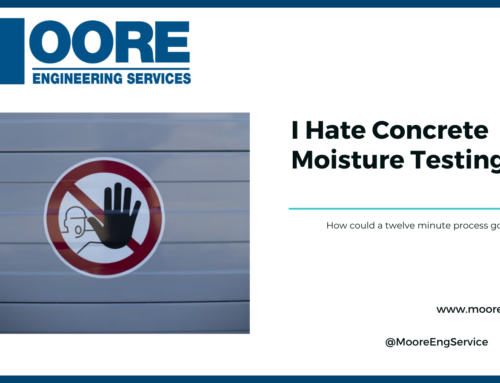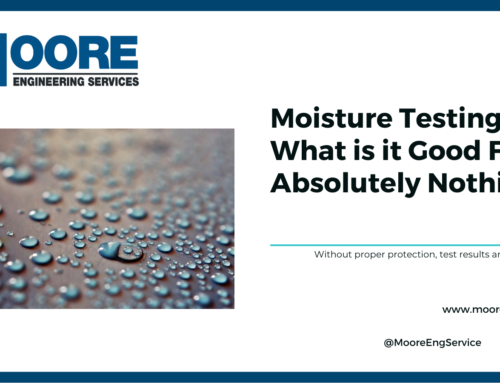Ensuring proper flooring for adequate slip resistance is one of Moore Engineering Services main priorities when servicing businesses. But there are numerous factors to consider that go into maintaining a floor with adequate slip resistance. Although the first place to start is choosing a floor that meets your facility’s needs, considering other factors like cleaning procedures and the need for walk off matting should be the second step.
Can you recall how many businesses you’ve walked into during inclement weather that have had a mat at the entrance? Hopefully the answer is all of them. Floor mats are a great way to stop the spread of water and other contaminates from being tracked inside the facility and are imperative in preventing slip and falls. The National Safety Council states many benefits for floor mats, as well as hazards from misuses, but the bottom line is that floor mats help prevent slips and falls when used properly.
Benefits of Floor Mats for Slippery Conditions
As pedestrians travel inside buildings from outside, there is an increased risk that they will track in wet foreign substances or aggressive contaminants. Incredibly necessary on rainy or snowy days, all businesses should ensure they have appropriately selected walk off matting in place to stop the spread of any foreign moisture. Providing pedestrians with the benefit of wiping their feet, the right floor mat is designed to absorb whatever foreign contaminants are tracked in on their shoes. That way, the foreign substances have less of a chance to track throughout the rest of the floor and create a hazard.
Floor protection shouldn’t stop at the entrance. Among others, grocery or department stores are likely to have water fountains, refrigerators, or freezers containing displayed product for sale. Due to the increased risk of spills in these areas, providing floor protection via mats is an important step in preventing the chance of spills and tracking that will more than likely cause patrons to slip.
These sentiments are supported by the industry accepted ASTM International F1637, for example stating:
5.4.2 Building entrances shall be provided with mats or
runners, or other means to help remove foreign particles and
other contaminants from the bottom of pedestrian footwear.
Mats should be provided to minimize foreign particles, that
may become dangerous to pedestrians particularly on hard
smooth floors, from being tracked on floors.
Don’t Get Tripped Up: Hazards of Floor Mats
Just because a floor mat is in use doesn’t mean it can be left for years and expected to provide continuous safety. Like any other object that experiences daily use, mats are likely to become torn, curled, or displaced. When this wear and tear occurs, instead of maintaining a floor safe, the preventative measure now poses a trip hazard.
The National Safety Council warns of potential trip hazards when “loose or raised areas can catch footwear” and when large or loose mats are not secured properly. It is important to consider the area you are trying to protect and the size, quantity and orientation of mats. The following principles are contained in many industry documents and are critical in the placement and care of matting within a facility:
• Overlapping mats can create a tripping hazard
• Saturated mats don’t work and allow water to be tracked onto adjacent floors
• Matting adequacy is determined empirically by observing the performance in real world conditions as every situation is unique
Example: if during inclement weather water is tracked off a series of mats then the matting is insufficient and should be either increased in size or traded out for dry matting
• The National Safety Council recommends a minimum of 30 feet of matting as a guideline
• Policies and procedures for drying or trade out of saturated mates must be in place
• Ensure mats are affixed to the floor and do not move or migrate by employing appropriate backing for the flooring
o Most manufacturers provide guidance on what types of backing will work best with specific floors. Typically small nubs for placing mats over carpet and textured or suction cup like backing for hard surface flooring
o If matting is prone to movement, consider using double sided tape, duct tape, or mechanical means to affix it in place
Bottom line: just as implementing a floor mat is necessary for slip protection, so is regularly maintaining the floor mat clean and dry. Mats should be regularly vacuumed, cleaned of dirt, and even professionally laundered. What benefit is a mat if it is just as wet and dirty as the puddle the pedestrian just walked through outside?
Maintaining Floors Safe Through Walkway Safety Auditing
This is just the start when it comes to the types of mats to use and how to properly take care of them to ensure longstanding protection. Mats are made of different materials, and each type has a specific benefit. Rubber mats are better suited against water conditions and are often used at the entrances of most commercial establishments. Whereas vinyl and neoprene mats contain slip resistant properties against grease, oil, chemicals, water, and extreme temperatures. Wooden mats are often utilized in exacerbated wet environments like saunas or marinas, and metal mats are great to remove mud and grime from shoes in outdoor areas.
If you feel overwhelmed regarding the number of factors that go into ensuring the best type of mat has been chosen for a specific facility, fear not! Moore Engineering Services is experienced and qualified in Walkway Safety Auditing. We understand what goes into making a floor safe, just as what makes it unsafe. Our thorough audit inspection will evaluate the Wet Dynamic Coefficient of Fiction of hard-surface floor materials, cleaning methods in use, and of course the floor matting in place.
Through these audits, we will help you determine the best course of action to ensure your floors remain safe and slip and trip free! We offer complimentary consultations via phone at 856-437-7900 or through the contact form below.
As always, Test Moore, Slip Less.






Leave A Comment